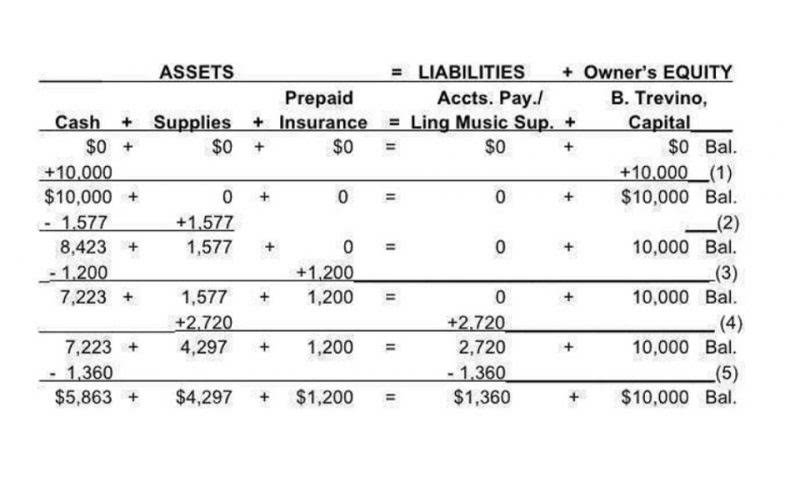Working in a nonprofit allows you to quickly learn how to differentiate it from for-profit organizations. While both involve tracking revenues and expenses, nonprofit accounting has unique requirements—like categorizing funds as restricted or unrestricted based on donor intentions. Learn what fund accounting is and explore the basics, key definitions, and best practices for nonprofits to ensure accurate fund reporting and transparency. Proper grant management can help you avoid overreporting income and ensure your funders and donors see an honest picture of your nonprofit’s financial health. When nonprofits follow accounting standards, they prioritize accountability in their financial practices, enabling them to address the potential concerns of donors and stakeholders.
Essential financial statements for nonprofits under GAAP
For instance, if Linda were to change the way she produced financial statements in the future, she would need to disclose the change and explain why those changes were made. GAAP reporting also excludes EBITDA (earnings before income taxes, depreciation, and amortization), which also reduces the amount of profit reported by a company. Excluding these items from reporting typically results in a higher net profit, which is why non-GAAP reporting is often more favorable to a company than reporting that follows GAAP. GAAP impacts every item on the financial statement, increasing transparency, while also having a significant impact on investors and other financial institutions. Without GAAP compliance, companies could Legal E-Billing easily create financial information that distorts the company’s true financial position. Since 1973, the Financial Accounting Standards Board (FASB), with input from other organizations such as the American Institute of Certified Public Accountants (AICPA), the U.S.

Nonprofit Budgeting and Forecasting Made Easy with Fund Accounting Software
One effective strategy for communicating these changes is to develop a comprehensive communication plan that outlines key messages, target audiences, and preferred communication channels. For instance, organizations may choose to host informational sessions or webinars for donors to explain how the new standards will impact their contributions and the organization’s financial health. Additionally, providing regular updates through newsletters or social media can help keep stakeholders informed and engaged throughout the transition process. Conditional contributions, tied to specific events or outcomes, can only be recognized when conditions are substantially met.

CLiF Literacy Enrichment Grant 2025 (New Hampshire and Vermont)
To act sincerely and in good faith, your organization needs to honor your commitments to use those funds as the donor or grantmaker intended. Plus, these contributors have the right to sue your nonprofit for misuse of funds if you don’t respect their official wishes—another way GAAP and legal requirements for nonprofits align. This statement helps to make sure your organization has the funds available to meet expenses when needed, supporting smoother operations and financial stability. By contrast, effective, automated accounting software tailored for nonprofit operations removes the need for manual data entry and keeps your data safe and secure. While program expenses are central to your nonprofit’s mission, covering overhead costs like salaries, rent, utilities, and technology is equally important for maintaining smooth operations.
What Are the Main Principles of GAAP?

Nonprofit organizations often enter into leases for various assets, such as office spaces, vehicles, or equipment. These lease agreements can have a significant financial impact and should be accounted for in accordance with ASC 842. Regulations are constantly evolving, so you must regularly review your financial statements and the effectiveness of your internal controls and procedures to stay compliant.

Grant and Donation Tracking
- They form the backbone of nonprofit financial reporting, ensuring that financial statements are clear, consistent, and transparent.
- The main purpose of GAAP is to ensure that financial reporting is transparent and consistent from one organization to another.
- Get our FREE guide to nonprofit financial reports, featuring illustrations, annotations, and insights to help you better understand your organization’s finances.
- But hopefully that person still has a long and fruitful life ahead of them, so your organization won’t see those funds for many years.
- The truth is, you can’t truly comply with accounting standards without first identifying which ones are applicable to your organization.
Nonprofit accounting standards differ from for-profit accounting standards because they consider nonprofits’ objectives and operational focus. Section 501 (c)(3) organizations must also adhere to specific tax-filing requirements that are GAAP for Nonprofits uniquely different from for-profit entities, as outlined in the Internal Revenue Code. In an accrual accounting system, your nonprofit will record revenue when it’s pledged and expenses when they’re incurred. This is in contrast to a cash accounting system, which records revenue and expenses only after the money has changed hands.
- The goal of GAAP is to ensure that the financial statements for for-profit entities are consistent across industries, allowing investors and the government to interpret them more easily.
- Additionally, Tom has 5 years of experience as a CFO at a nonprofit and has spent 15 years working with nonprofits to optimize their accounting processes and systems.
- GAAP standards require that companies use specific guidelines when creating financial statements, and that reporting practices remain the same across all publicly held companies.
- If you’re handling the accounting for a nonprofit with multiple entities or related organizations, you know how quickly things can get complicated.
Discover essential nonprofit accounting practices to enhance financial management and ensure organizational success. The quandary that faces every nonprofit management team is how to communicate the difference in GAAP to non-GAAP operating results. Explore our nonprofit accounting software to discover how we can help you manage your organization’s finances more efficiently by giving you more time to QuickBooks focus on making a positive impact in your community.
- For example, board members should understand how changes in revenue recognition may impact financial planning and resource allocation.
- You can confidently manage your books, financial health, and bottom line the right way, the first time and every time.
- Depending on its registration and activities, these reports ensure compliance with state-specific regulations and enhance transparency around your nonprofit’s financial operations.
- By contrast, effective, automated accounting software tailored for nonprofit operations removes the need for manual data entry and keeps your data safe and secure.
- This involves maintaining detailed records of each grant or donation, including donor identity, fund purpose, and any specific restrictions.
Reviewing past budgets and financial reports is the key to understanding spending patterns and identifying areas for improvement. A good financial plan should give your team the tools they need to set realistic goals, track income and expenses, and make informed decisions. Embracing these changes not only enhances compliance but also strengthens an organization’s overall financial health and credibility in the eyes of its supporters and beneficiaries.
In addition to GAAP, nonprofits must also comply with FASB 117, the Financial Accounting Standards Board’s Statement of Financial Accounting Standards No. 117 (FASB 117). Identifying your nonprofit’s primary revenue stream lays the foundation for your financial plan, guiding resource allocation, anticipating funding cycles, and managing income variability. This guide will walk you through nine essential steps to create an effective financial plan for nonprofit organizations.
